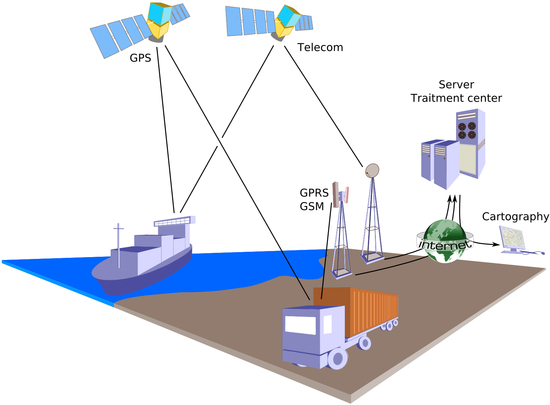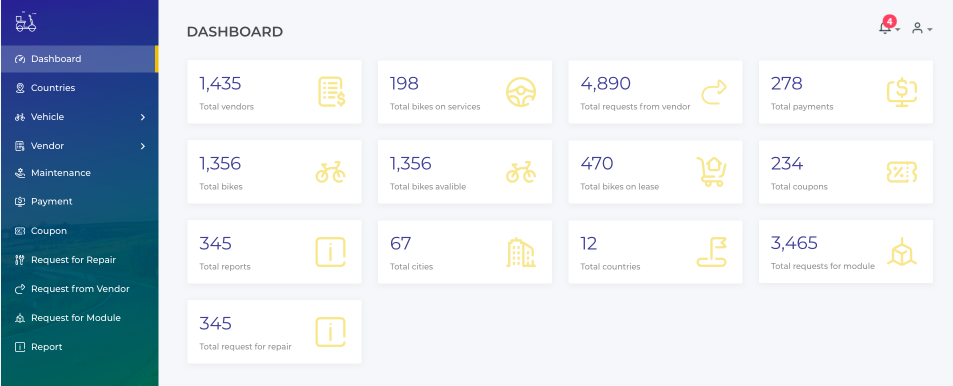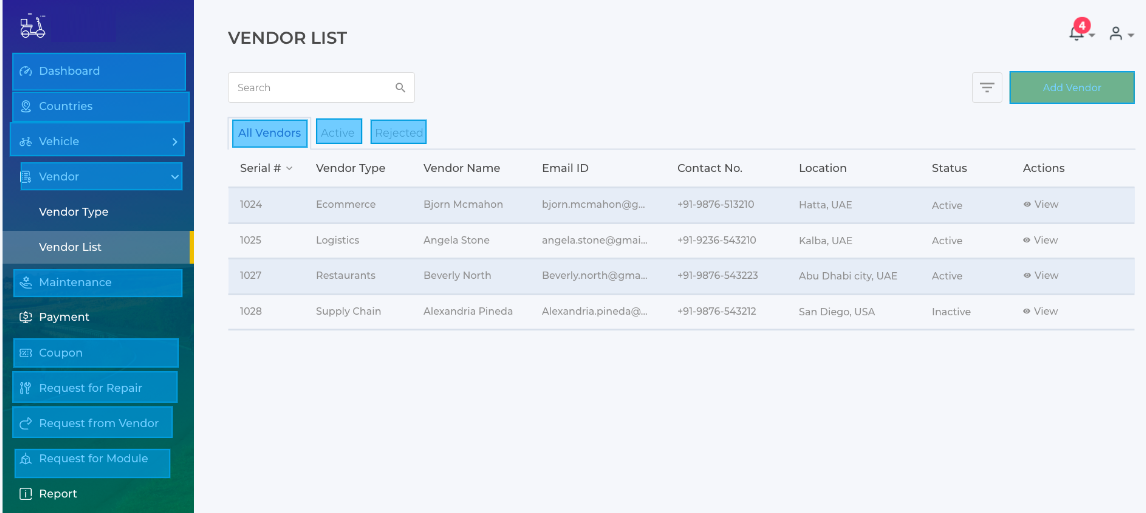Wondering how to automate your fleet management? Technology has been making our lives simpler, and businesses profitable with innovations. The process of integrated supply chain management has been technologised by fleet management software.
Fleet Management, roughly translated into layman’s language refers to vehicle management and tracking, field force and route optimisation for freight technology. It falls under a sub-category of logistics management software that automate data relating to the supply chain management.
75% of shoppers believe proactive communication is an important aspect of the delivery experience.
-(source)
Well, communication between business owners and their clients is now more convenient than ever. It has even grown to become a major revenue driving factor. With efficient fleet management, not only can businesses generate more revenue, but also drive innovation in the otherwise tedious task.
Let’s see how.
Fleet Management for Vehicles

One can easily run a fleet management business with a limited number of requirements like: a fleet of vehicles and monetary investment for an application to automate every process. Also, tracking the fleet of vehicles is important for various delivery purposes.
These applications can be integrated with multiple features ranging from Order Management, Driver Management and Vehicle Management with facilities like route optimisation, vehicle vendor listing, payment per deliveries/ orders completed, etc.
Assets Management with Fleet Management:
The fact that so many delivery businesses depend on the mobility aspect is a clear indicator that there’s a huge demand in the market for fleet management software. Take any online business that facilitates deliveries. From groceries, food, flowers or cakes… there are numerous things that are now accessible for delivery on an hourly basis.
An individual specifically assigned for the particular task will be required for every delivery being made. While it provides employment on a large scale, it even requires an investment on the assets like
- Commercial motor vehicles: such as cars, vans, trucks, specialist vehicles (mobile construction machinery), forklifts, and trailers
- Private vehicles used for work purposes
- Aviation machinery such as aircraft: planes and helicopters, Ships, Rail cars
- GPRS, Privacy of the consumer, etc.

The Market For Fleet Management:
With the credibility that firms like Amazon and FedEx are enjoying, it’s obvious that the competition is all set to grow in the coming years. From pickups to delivery, the lucrative industry caters to every domain, be it ecommerce, export-import or a simple parcel delivery.
Fleet Management Market size is expected to reach $34,629 million by 2022, from $7,755 million in 2015, growing at a CAGR of 24.5% from 2016 to 2022.
-(source)
To add to this, there’s statistics that state: 94% of the consumers will blame the retailer if the delivery goes wrong. In which case, if you’re about to start a fleet management supply chain of goods, you must maintain the quality and create a brand name for yourself. It’s essential to gain the trust of your retailers before you plan to expand.
The Different Aspects of Fleet Management:
Suppose one of your vehicles left the facility from your end but never made it to the destination. In this case, it would still be under your management to track and complete the delivery process. However, there could be numerous reasons behind the failed or delayed process. There’s fuel shortage, vehicle damage or repairing emergency, something related to the inability to track the routes taken by driver partners, etc.
Interestingly, with logistics management software, it’s possible to resolve all of the aforementioned as well as other issues. Be it vehicle damage or traffic stagnancy, you can simply provide your entire team with applications for inventory management, capacity planning, real-time visibility and analytics, dispatch and other detailed reports.
Check out this picture for instance.

Makes everything clear, right?
If you have an automated database for all your vendors’ bikes/ vehicles, the details from dispatch to payments, there’s a very less probability of something going out of hands, and you not being able to track it.
Quality Control
One important aspect of fleet vehicle maintenance is proper monitoring of the work completed on assets. Undoubtedly, the team’s service providers might be doing an excellent job at conducting thorough repairs and servicing. But, it’s never worth risking the chance and not verifying yourself.
Inspections are necessary to ensure the quality of the vehicle maintenance upto the standards. Such routine and scheduled quality checks shortly after the servicing is complete go a long way in the over-all performance.
Also read: Integrated Logistics Management Software: Uber For Supply Chain Management
Vendor Contracts Based on Performance:
To confirm the quality of your vendor’s work, you might want to negotiate the terms of service prior to agreeing to any maintenance. Just ensure that you have prepared with you a list of services needed. You can present them prior to any sort of negotiating. You can even integrate performance metrics to hold the service providers accountable for their work.
These can include (but not limited to) repair turnover rates, comeback rates and the results from your own quality control review. Measuring performance might seem mundane, but it surely can’t be overlooked. This will prevent your assets from being stuck in the shop for too long in addition to ensuring timely transactions with the vendors.
It not only prevents any sudden need for additional maintenance, but also gives a reassurance that right maintenance providers have been chosen for your fleet. Afterall, having peace of mind that your fleet vehicles are fully-functioned is a value that cannot be overlooked.
The Development of Fleet Management Software:
Undoubtedly, the potential of the industry is immense. Your software for fleet management will cater to all the pain points of the domain but you need to hire the right tech partner for getting the software developed in the first place. The pricing plans being offered to you are not as important as the quality.
Before hurriedly jumping in to any conclusions, make sure you’ve thoroughly conducted a market research for the persistent problems. It will give you an edge over your competitors.
A right development partner will be able to guide you with the appropriate frameworks, the coding standards followed by them that would also be implemented for your business niche. Before hiring, explore their portfolio and check if they’ve doe any similar work before. Now was it a successful project? Go through the reviews to cross-check.
A scalable, secure and robust fleet management software is not that difficult to develop if the team has enough domain experience. The UI and UX must be interactive and user friendly. Check out the app Delivr we made for one of our clients:

Summing Up…
Adopt innovative delivery management system to get an improved asset utilisation, better customer satisfaction with reduced fuel usage. Regardless of whether it’s for transport or logistics, automation via reliable fleet management software is the answer to this.
At EngineerBabu, we have previously developed applications in this domain. It includes Delivr and MaalGaadi, 2 of our best ones, yet. And yours could be next! 
Liked the article? Also Read:

